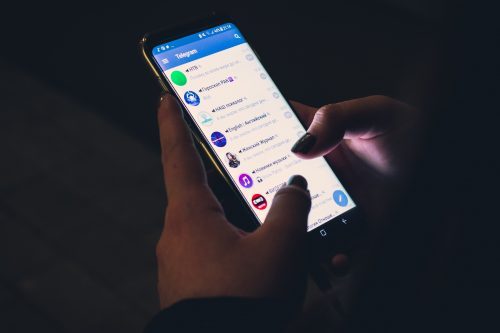At the end of the day, every app developer intends to generate revenue from their creations. The goal is not merely to cover the costs of its production, but also to turn a profit as well. After all, we might love what we do. So, if our apps don’t bring in revenue, who’s going to pay the bills and put food on our tables?
Nowadays, monetizing your mobile app is a hugely important factor to consider. It is sure to be at the forefront of most app developer’s minds.
Are In-App Purchases A Nice Way To Earn?
There are lots of different ways to create revenue from app development. One of the most popular right now is by using in-app purchases.
The in-app purchase market is booming right now, and we’re sure you’ve been following the figures closely yourselves. According to recent statistics, the total global revenue created solely by in-app purchases in 2017 was almost $40 billion. That’s highly significant, when the previous year saw a final sum of less than half of that figure.
It also takes on the greater significance that the 2017 total made from paid-app downloads (previously the strongest way to make money from apps) was $30 billion. It shows you where the money-making potential in apps really lies.

In-app purchases are ruling the app industry right now. If you’re an app developer looking for ways to turn what you do into a viable living, this should really be your primary point of focus for the time being.
For developers, the use of in-app purchases has a clear benefit. It makes money and gives you a very evident source of feedback, regarding how well your app is doing on the market, and how engaged your users are.
From the user’s point of view, in-app purchases are viewed either as a great way to take their experience with the app further. Also, it’s a way to gain more enjoyment and usability from the service you provide or as an instant turn-off, which leads them to abandon the app completely as soon as they’re asked to cough up money for features.
Getting the balance right – so as to encourage the user that the purchase is worthwhile – is no mean feat. Plenty of app developers have fallen by the wayside as a result of errors of judgement in this regard. In this brief guide, we’re going to be giving an overview of in-app purchases. Also, we will be thinking about how best to make them work for you.
The New App Store Policies
As we all know, the App Store is pretty much constantly updating and changing its policies, in an attempt to continually keep up with the ever-changing landscape of the app industry. While this can be a bit of a headache, it’s fair to say that the majority of App Store policies are in place for good reason. Their diligence does ensure that quality remains high and user experiences remain positive.
Now, the App Store has four types of in-app purchasing models you can pursue your app creations. Naturally, before you even begin implementing any of them, there are a handful of legal hoops to jump through, forms to sign, and tax declarations to make. Once those are all done, you’re free to go ahead with either:
Consumables
These are typically in-app purchases for games. Consumables would include one-off purchases for lives, gems, passwords etc. Once they’re purchased and ‘consumed’, another payment would have to be made in order to benefit from them again.
Non-Consumables
This type of in-app purchase model usually involves giving users access to some sort of premium content. Purchased once, and without an expiry date, a typical example would be a filter for a photo app.
Auto-renewable Subscriptions
Users will agree to pay on a regular basis in order to subscribe to a service or feature. So, the payment will be taken at agreed intervals until the user agrees to cancel.
Non-renewing Subscriptions
These will be subscriptions with a set expiration date, for example, a season membership to a club or streaming service.
How to Implement In-App Purchasing
If you’re considering bringing in-app purchasing into your app, it’s really something you need to have thought about from the very beginning of your app design.
After all, it will probably end up being a key feature of your product. And if it hasn’t been part of your plan from the start, it can be tricky to retrofit in-app purchasing options into the finished app.
Once you’ve made the decision to implement in-app purchasing, you’ll need to think carefully about a whole number of factors.
- What will the purchases be for?
- What type of purchases will your users be making (look at the models described above)?
- Are the purchases necessary for your user’s enjoyment of the app, or are they an optional, additional extra?
- How will you encourage your users to make purchases?
There are a whole load of things to consider when it comes to this particular niche of app development. And it’s probably worthwhile taking some real time to plan out different options, and see which work best for you and your intended audience.
The Best and Most Common Way of Using In-App Purchases
As previously mentioned, there are several types of in-app purchases your users could make. However, the area which has seen the most success when it comes to monetizing apps has been the world of mobile games.
This probably shouldn’t come as much of a surprise. We’re all well away of how easy it is to become quite fixated on mobile games. The whole set-up of the vast majority of games involves progressing to the next level with an aim of ultimately completing the whole thing.

As a result, in-app purchases make perfect sense: the game might be perfectly completable without any purchases being involved. If you want to get to that destination a little more quickly and easily (alongside some super-cool, exclusive power-up features etc), then purchases can logically and effectively come into play.
How To Earn Money Without Limiting Your Users
The main technique for gaining success with your in-app purchases is to ensure your consumables etc really add value to the app experience. Nobody wants to spend their money on something which brings no noticeable improvements, but demonstrate why the purchase will heighten their encounters with your app, and you’re onto a winner. It’s also important to keep in mind the following points:
- Loyalty is key. App users generally won’t purchase anything until they’ve interacted with your app a minimum of 10 times. Give them plenty to explore and experience, and boost those loyalty levels if you want to see the money flowing in.
- Save the purchasable elements for later. Few people will bother clicking on the ‘buy’ button until they’ve progressed through your app or game to a particular point. Start bombarding users with calls to buy tokens, gems etc on the first level (or equivalent), and your users will be turned off.
What Users Feel About In-App Purchases
There’s no doubt about the fact that a huge number of users will not be interested in in-app purchases, no matter how tempting you make your offers.
There’s just a percentage of the app-using population who draw a line at spending money on apps… and there’s not a whole lot you can do about that. However, it’s important to bear in mind that in-app purchases are becoming more commonplace. So, people are starting to come round to the idea that these features are simply a part of the modern app landscape.
So long as you make it clear that your app is trustworthy, and you aren’t tying them into some complicated contract, you should always be able to attract buyers who’ll help boost your bank balance.
Lastly… Think About Pricing
This may seem like an obvious point, but it’s an important one. If you price your exclusive features way over the normal rates on the market, it’s highly likely you aren’t going to get a whole lot of customers.
- Take some time to look at the average rates and prices of boosts and exclusive content out there on the popular App Store apps, and make sure your pricing reflects the standard industry rates. Price your specials too low, and people won’t think they’re worthwhile.
- Make them too expensive, and your audience will be wary of committing. Get it just right, and there’s no reason why you can’t have the success seen by so many others. Common sense and a cautious approach will get you far in this industry!

